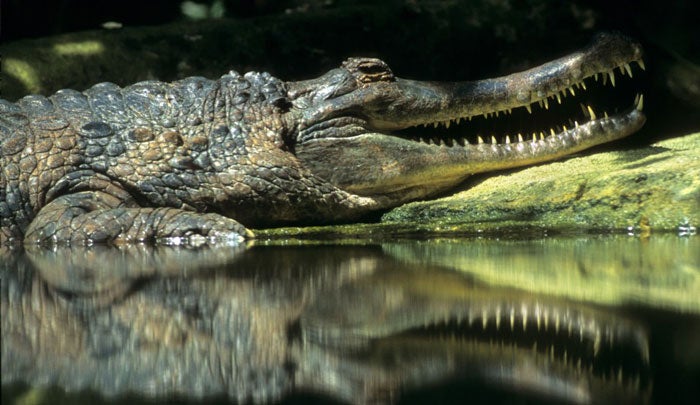Extinction fear as mystery disease kills India's rare river crocodiles

Almost every day, park rangers in India are discovering the bodies of gharials, an extremely rare river crocodile which appears to have fallen victim to a mysterious disease that is puzzling the experts.
Once spread across large parts of the sub-continent, now there may no be now more a few hundred of the creatures left in the wild in India. And in one location alone, the Chambal River Sanctuary in the state of Madhya Pradesh, 100 gharials have been found dead in the past six weeks.
An Indian wildlife documentary maker, Naresh Bedi, recently travelled to the sanctuary to film the reptiles. "Their reflexes were not working," he told CNN. "They were trying to keep their heads up above the water. Their eyes were closed. I don't know what they were suffering from."
Different tests have failed to explain what is killing the crocodiles, distinctive for their long, pointed snouts. Examinations have revealed the presence of lead in the carcasses, but experts ask why other wildlife in the Chambal was not affected if lead poisoning killed them.
Last month, one official said cirrhosis of the liver was the probable cause of the deaths. This led to the tests of the water for toxins. The results are, as yet unclear, but officials are still mystified as to what killed them. International scientists are expected to arrive soon to aid the Indian experts. The plight of the gharial, which grows up to six metres long, has been a story of constant decline, brought about largely by the loss of habitat caused by the construction of dams and canals. Although the gharial has been a fully protected species since the 1970s, fishermen kill them when they become entangled in nets, chopping off the heads and tails.
Last year, the status of the gharial was increased from endangered to critically endangered after one report suggested there may be as few as 200 left in the wild in India.
"The Indian gharial faces a threat both from fishing and illegal activities such as sand-mining that have destroyed its nesting areas," says Sandeep Behra, who heads the World Wildlife Fund's gharial conservation programme.
Along with the Chambal river, the only known breeding site for the gharial in India is a three-mile stretch of the Girwa river in Katerniaghat Wildlife Sanctuary, on the border with Nepal.
Join our commenting forum
Join thought-provoking conversations, follow other Independent readers and see their replies
Comments
Bookmark popover
Removed from bookmarks